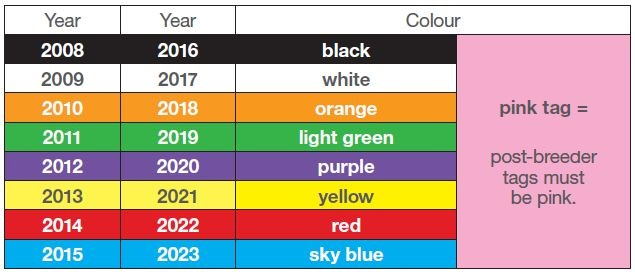CMA – EID Review Workshop
| Project start date: | 01 September 2010 |
| Project end date: | 29 June 2011 |
| Publication date: | 01 January 2013 |
| Project status: | Completed |
| Livestock species: | Sheep |
| Relevant regions: | National |
Summary
In response to an earlier approach from the Victorian Department of Primary Industries (DPI), MLA contracted Miracle Dog Pty Ltd to arrange and facilitate an industry workshop to critically examine the on-farm application and value of Electronic Identification (EID) for the sheep industry in Australia.
This workshop aimed to ensure that any decisions made at some point in the future are as well-informed by on-farm RD&E as possible so as to maximise the benefit to producers and others along the pipeline. The workshop assumed that in 10 years-time, technology will have developed to the extent that the industry will be looking at using EID in the sheep industry in a range of ways. The primary question then becomes “what do we need from an on-farm RD&E perspective in coming years to optimise industry productivity and profitability from the application of the technology”.
Objectives
- Review on-farm research development and extension (RD&E) work conducted over the last 10 years, to:
- understand what/how much work has been done;
- what enterprise mix and scale has been addressed;
- what farmer involvement there has been: and
- what are the institutional contexts.
- Review economic evaluations for farm-level
- Assess the need for further on-farm RD&E into the utilisation of EID and associated
- Where possible, ensure that policy development is informed by the full range of past, current and any future new RD&E.
- Review on-farm research development and extension (RD&E) work conducted over the last 10 years, to:
- understand what/how much work has been done;
- what enterprise mix and scale has been addressed;
- what farmer involvement there has been: and
- what are the institutional contexts.
- Review economic evaluations for farm-level
- Assess the need for further on-farm RD&E into the utilisation of EID and associated
- Where possible, ensure that policy development is informed by the full range of past, current and any future new RD&E.
Key findings
Situational analysis
The application of electronic identification (EID) of sheep in Australia has been the subject of much discussion and research over many years. While there is no doubt that EID has a benefit from a biosecurity / animal traceability perspective, the cost and utility of the technology from a producers perspective is far less clear.
There have been numerous trials and reviews undertaken on the technology, including by the Sheep CRC, Animal Health Australia, the Victorian DPI and numerous private operators. Presentations on this research and specific reviews were provided to the workshop.
Sheep ID in Australia
A search of Australian State Department of Agriculture / Primary Industries websites and documents reveals that from a regulatory perspective, there is as yet no requirement for sheep producers to use electronic ID. However, the tagging of sheep is required. In most states, all sheep (and farmed goats) must now be identified with an approved NLIS (Sheep) tag prior to dispatch to a sale-yard, abattoir, or another property with a different Property Identification Code (PIC). NLIS (Sheep) tags must be stamped with the PIC of the property on which they are to be used and the NLIS logo.
Sheep and goat producers are also required to:
- Ensure their properties have a Property Identification Code (PIC).
Provide a National Vendor Declaration (NVD) when dispatching sheep or farmed goats of any age to a saleyard or abattoir, or to another property with a different PIC. - There are two types of visual NLIS (Sheep) tags approved for the permanent identification of sheep and farmed goats:

NLIS sheep breeder tags – these tags are colour coded for year of birth. This type of tag can only be used to identify sheep and goats that are still on their property of birth. The colour for year of birth is not mandatory, but strongly recommended.
NLIS sheep Post-breeder Tags – these tags are always pink and are used to identify sheep and goats no longer on the property on which they were born or introduced animals that have lost their original NLIS Sheep Breeder Tag. They can also be used on sheep that are born on the property.
Sheep producers have the opportunity to purchase electronic tags for use as part of the NLIS (Sheep & Goats). The use of electronic sheep tags is voluntary. These tags are approximately $1 in Victoria and $1.10 - $1.20 in other States. To support those wishing to use EID, an NLIS Standard for Sheep RFID was finalised in early 2009.
Since 1 July 2010 all mob-based movements of sheep and goats between properties are required to be uploaded to the NLIS database in most States. In WA this has been on a voluntary basis although it becomes mandatory in 2011.
Uploading of the information contained on the movement document to the NLIS database is required by the person receiving the sheep or goats at that property. This must be done within 7 days of the sheep or goats' arrival.
Mob-based uploads to the NLIS database for sheep and goats have been occurring through sale yards since 1 September 2009. The mob-based upload is done by the owner or person in charge of the sale yard and usually within a day after the sale, depending on whether the sheep and goats are sold for slaughter, are sold to another PIC or are unsold and return to their original property.
Mob-based uploads to the NLIS database from abattoirs, feedlots, goat depots and export depots have occurred since 1 January 2010.
More information
| Project manager: | Richard Apps |
| Primary researcher: | Miracle Dog Pty Ltd |


